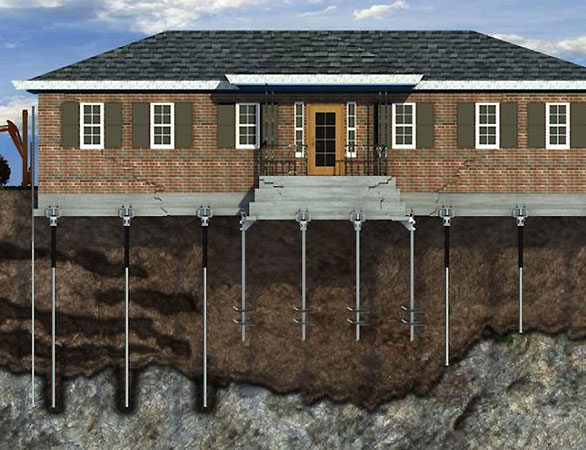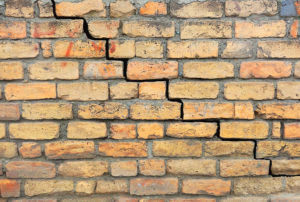Foundation Repair Dallas: Ensuring Safety and Security for Every Framework
Foundation Fixing Techniques: A Detailed Review
Structure Fixing Techniques: A Comprehensive Introduction
Foundation problems can cause considerable structural damages to structures, endangering their security and safety. Recognizing foundation fixing techniques is important for homeowners, designers, and contractors associated with construction and maintenance tasks. This detailed overview offers a comprehensive assessment of various methods utilized to resolve foundation problems, making sure a solid and safe and secure foundation for any kind of structure.
The guide covers necessary strategies such as slab jacking, pier and beam reinforcement, cellar wall surface anchoring, dirt stablizing, and foundation underpinning. Each technique is described thorough, highlighting its function, performance, and application. Foundation Repair Dallas. In addition, the review talks about elements to consider when selecting the proper fixing approach, such as dirt conditions, building kind, and monetary restrictions
Whether you are a property owner looking for to deal with structure concerns or an expert in the construction market, this thorough introduction acts as an useful source, providing crucial knowledge and insights into structure repair work techniques.
Piece Jacking
Slab jacking, often utilized as a trustworthy and often used approach, raises sunken concrete pieces by infusing a maintaining material below, effectively recovering the structure to its initial level. This strategy is generally utilized in scenarios where the ground has resolved or shifted, causing concrete slabs to sink or end up being irregular. Slab jacking is a cost-effective choice to totally replacing the concrete, as it deals with the origin of the problem and provides a lasting service.

Among the significant benefits of piece jacking is its minimally intrusive nature. The tiny openings pierced for the injection process can conveniently be covered, leaving no visible indications of fixing. Additionally, piece jacking can be completed promptly, commonly within a day, reducing disturbance to the residential property proprietor. This strategy appropriates for a large range of concrete frameworks, including driveways, sidewalks, outdoor patios, and cellar floorings.
Pier and Beam Of Light Reinforcement
One more generally employed strategy in structure repair is pier and beam support, which builds on the previous approach of piece jacking to offer additional architectural support and stability to the foundation. This strategy is particularly valuable in areas with weak dirt problems or when the foundation has suffered considerable damage.
Pier and beam reinforcement involves mounting vertical concrete or steel piers under the structure to transfer the weight of the framework to much deeper, a lot more stable soil layers. These piers are purposefully put along the boundary of the structure and at interior bearing walls to equally disperse the lots and avoid further negotiation.
To reinforce the beams, additional steel or concrete assistances are added to reinforce and maintain the existing light beams. This is done by connecting steel brackets or beam of lights to the existing light beams and securing them with screws or other bolts. The support materials are picked based on the particular demands of the structure and the level of the damages.
Pier and light beam reinforcement not only provides prompt assistance to the structure yet additionally helps to stop future negotiation and architectural damage. FCS Foundation Repair Dallas Concrete Contractor. By rearranging the tons Check This Out and transferring it to stronger soil layers, this strategy makes certain the long-term stability and stability of the structure
Cellar Wall Surface Anchoring
Cellar wall surface anchoring is an important technique utilized in structure repair work to improve the security and structural honesty of the foundation, particularly in locations vulnerable to soil motion and cellar wall surface failing. When the dirt around a structure experiences too much dampness or changes as a result of geological aspects, it can exert considerable pressure on the basement wall surfaces, creating them to break, bow, or even collapse. This can bring about significant structural problems and endanger the safety of the whole structure.
Cellar wall securing entails setting up specialized anchors or helical tiebacks into the ground beside the structure walls. These anchors are created to permeate deep into secure soil or bedrock, creating a solid connection in between the foundation and the ground. By dispersing the tons of the foundation evenly and resisting the side forces put in by the soil, cellar wall surface securing gives extra assistance and stops further motion or deterioration of the wall surfaces.
There are various sorts of basement wall securing systems readily available, including steel wall supports, helical tiebacks, and carbon fiber straps. The choice of system depends upon variables such as the extent of the wall activity, soil problems, and the specific demands of the structure. Professional foundation fixing service providers evaluate these aspects and advise one of the most appropriate anchoring solution for every unique situation.
Soil Stablizing
To resolve the difficulties of dirt movement and ensure the stability of structures, soil stablizing strategies are utilized in foundation fixing. Soil stabilization refers to the process of boosting the homes of the soil to enhance its load-bearing capacity and lower its sensitivity to movement. There are a number of approaches used for dirt stabilization, each customized to the specific qualities of the dirt and the needs of the structure.

Mechanical stabilization is another extensively utilized approach that includes the physical alteration of the dirt. This method includes techniques such as compaction, which boosts the density of the dirt, and soil substitute, which entails eliminating weak dirt and changing it with even more stable products.
Additionally, soil stablizing might additionally include using geosynthetic materials like geogrids, geotextiles, or geocells. These materials are put within the dirt to enhance it and distribute the tons much more uniformly, Get More Information lowering the risk of settlement or heave.
Structure Foundation
Exactly how can foundation underpinning properly attend to the obstacles of dirt movement and guarantee the stability of structures? Structure support is a method made use of to enhance and support existing foundations that have been influenced by dirt movement. This approach includes prolonging the depth or breadth of the concrete post foundation foundation to a much more secure dirt layer or redistributing the tons across a bigger location, therefore improving its load-bearing capability.
There are numerous sorts of structure base strategies generally made use of in the sector. One technique is mass concrete underpinning, where brand-new concrete is put below the existing foundation to enhance its depth and stability. One more method is beam of light and base support, which entails creating strengthened concrete light beams below the existing foundation, transferring the load to deeper, much more stable soils.
Helical heap underpinning is additionally generally used. It involves installing helical stacks right into the ground beneath the foundation, which supply added support and stability. These heaps are screwed into the soil and can be used to move the lots of the structure to even more qualified soil layers.
Final Thought
To conclude, structure repair techniques play an essential role in keeping the architectural honesty of structures. Slab jacking, pier and beam of light reinforcement, basement wall surface anchoring, dirt stabilization, and foundation support are all reliable approaches made use of to attend to structure issues. By implementing these methods, residential property owners can make sure the security and safety of their frameworks for years ahead.
Cellar wall surface anchoring is a vital strategy made use of in foundation fixing to improve the stability and structural stability of the foundation, specifically in locations prone to dirt motion and cellar wall failure.To resolve the difficulties of soil activity and make certain the security of structures, soil stablizing techniques are used in structure repair work. There are several techniques made use of for soil stabilization, each tailored to the details attributes of the dirt and the requirements of the structure.
Structure base is a method utilized to reinforce and maintain existing structures that have been influenced by dirt activity. Piece jacking, pier and beam of light reinforcement, cellar wall anchoring, dirt stabilization, and foundation base are all reliable approaches utilized to resolve foundation concerns.